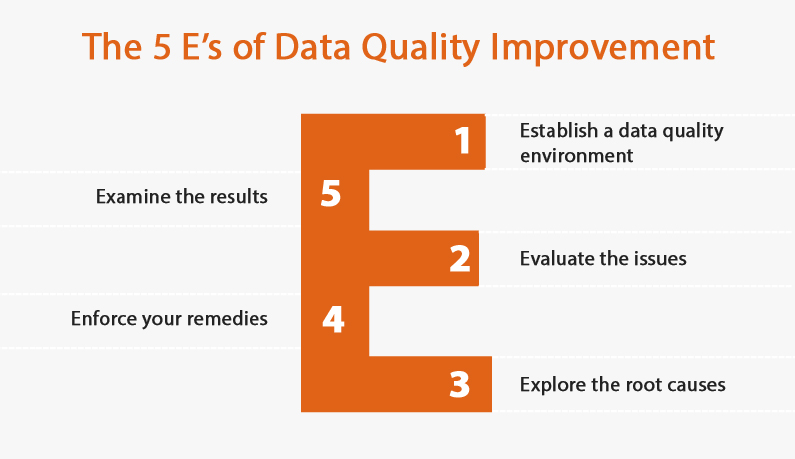

Hiring an in-house team for data entry does seem tempting at first, but trust us, it isn’t an attractive proposition in the long run. There’s this exorbitant cost of infrastructure that you need to bear, add to that the underlying need to adapt to the latest technology, and the time that you’ll have to invest. Also, the more you try and take care of data entry all by yourself, the less you will be able to focus on your core tasks. Outsourcing data entry services on the other hand, could be a win-win situation, wherein you get the work done, invest less in terms of the costs involved, and aren’t required to spend hours and hours, keying in data.
But why this fuss about data entry in the first place? Well, the numbers speak for themselves. Take a look:

(Source: Data Age 2025)
And while data entry on the whole is quite a comprehensive process, including offline and online data entry, image data entry, company reports data entry, invoice data entry, text & numeric data entry, etc., we’ll talk about the Offline and Online variants for now.
Online data entry – An overview
Data, if not handled well, could be your worst nightmare. And the more it grows in volume, the more difficult it can be to manage. Yes, you can try your hand at obsolete methods of data entry, but then you could inadvertently end up adding to the chaos. Who’s to say, you won’t be left to fend for yourself, dealing with errors that could impair your decision making process? Not a sight for sore eyes, is it? Worry not, for online data entry can offer a fix, and a strong one at that.
Scope of online data entry services:
- Online forms
- Cards and documents
- Subscriptions
- Coupon redemptions
- Online bills & receipts
- Mailings lists & labels
- PDF document indexing
- Shipping documents
- Credit card applications
- Electronic bill of lading (e-BOL) generation
And many more…!
Online data entry has quite a few applications. You could be filling out online forms and questionnaires, uploading bulk product data to an eCommerce website, or getting your mailing list in order – just about any data can be entered online to ensure that you have it at your disposal at the time of need.
Benefits of online data entry
Online data entry ensures that it is no longer difficult for you to access business-critical information. It’s fed right into your online database and/or cloud based application, from where you can retrieve the information at free will. It is in fact possible to enter the data directly into a remote server, if it comes to that.
Also, it gives a much-needed boost to data mining. You can find and compile from different resources, which are easily available online. And thanks to the internet, you can scour through informative resources from the world over to look for data that can do you some real good.
Cheat Sheet:
- Make sure you have a high-speed internet connection
- A firewall and an anti-virus, preferably the latest one, can help keep your data secure
- Strive for error-free data entry
Offline data entry – An overview
Data sources galore. For all you know, you could have untapped data lying around in business cards, application forms, company reports, etc. Now, this data needs to be compiled for you to be able to, let’s say, keep tabs on the market trends, dig deeper into your customers’ preferences, and last but not least, ensure that business and customer information is readily accessible. And that’s where offline data entry comes into the picture. On that note, while the term offline refers to the non-use of the internet, and rightly so, it does involve computers and software.
Scope of offline data entry services:
- Product registration cards
- Customer feedback forms
- Legal documents
- Insurance forms
- Invoices & receipts
- Manuals
- Form processing
- Product catalogs
- Mailing lists
And many more…!
And guess what, offline data entry is not restricted to mere compilation of data, and can very well entail medical records data entry, eBooks entry, URL list collection, MS Word document entry, and whatnot.
Benefits of offline data entry
For starters, it makes your data usable. Forms that have been filled out on paper, manuscripts that may not have been digitized yet, and research papers penned down by university professors – these could all be carrying valuable information. But the million-dollar question is, how do you get the most out of this information? Is there a way to collect it, or better still, synchronize it, so that you can refer to it, as an when required? Well, you are in for a treat, because that’s exactly what offline data entry is aimed at, collection and synchronization of useful information that is.
Secondly, there are no limitations, none whatsoever, in terms of the format in use. Meaning, your data could be stored in just about any of the popular formats, including paper, CDs, DVDs, documents, bills, etc. And not to mention, this data can be entered in MS Word, MS Excel, CSV files, MS Access, or any other offline database of your choice. In fact, it’s possible to key in data from one file format to another.
Cheat Sheet:
- Try and see if you can figure out the double entry system (DES), because if you do nail it, you’d be able to cut down on errors big time
- Also, be sure to verify the accuracy of the data. Do whatever it takes, including regular checks, to ensure that the final output is error-free
- Secure your data. Prevent unauthorized access, and keep it safe
When you contact our offline data entry experts, ask them how they achieve 99.99% accuracy with utter ease.
Making The Most Of Data Entry
As already mentioned, data is huge. Now, you need to key in this data in such a manner that it is well sorted and organized, can be easily accessed, and is available for future use. This is only possible if you work towards improving the data entry process. Well, here are a few pointers to help you get started:
Ensure the relevance of your database
Redundant and/or obsolete data can defeat the very purpose of data entry, and is better left unentered. If anything, by dedicating a resource or two to enter any such data, you could be losing out on productive time, which can be put to some good use for more important tasks. But the more pressing issue is ensuring that you enter relevant data in the first place? And how do you do that? Well, the answer lies in periodic reviews. Unless you monitor the process at regular intervals, irrelevant data is highly likely to slip through the cracks.
Keep an eye out for inaccuracy
Take to data profiling if need be, but make sure that the data you enter addresses your pain points, and helps you make informed decisions, aids analysis, and more importantly, minimizes the inherent risk of wrong predictions. And while you are at it, make it a point to nip inaccurate and incomplete data in the bud.
Avoid making the same mistakes over and over
As already mentioned, you need to monitor the data entry process regularly, especially if you want to find out the loopholes and shortcomings, if any, and take corrective measures accordingly. Here’s how you can go about it:
- Taxonomy analysis: Also known as cluster analysis, it could help you identify homogeneous groups, and is one of the easiest ways to bring discrepancies to the fore.
- Data event analysis: Alternatively, you can opt for data event analysis, which, as the name suggests, would require you to analyze the events where data is created or modified, to begin with, thereby helping you get to the root cause of the problems.
Bonus tip: Depending on the type of data in question, you can choose among these variations of cluster analysis: K-Means clustering, Mean-Shift clustering, Gaussian Mixture Model (GMM) clustering, and Agglomerative Hierarchical clustering. Just weigh their pros and cons, and take your pick!
Here’s another one: Data profiling techniques such as column property analysis, structure analysis, simple data rule analysis, complex data rule analysis, and value rule analysis can come in handy for sure. But, if you are not good at making the most of them, make sure that your data entry services company is.
Enhance the quality of data

Standardize your data. Start off by collecting the data in a common format, make sure that the applicable international or local standards such as SDG indicators are duly met, and finally when you have the data with you, get down to converting it to z-scores. There, you have it, accurate, consistent, and compliant data, all yours to put to some good use.
Must Read:
Bring down the errors (at least try to)
In all honesty, manual data entry has its fair share of advantages, but then, it does leave room for inconsistencies and errors, which are of course a big no-no. So, first things first, take to automation at the earliest. Doing so would not only help you cut down on the potential errors, but will also be instrumental in saving your time and resources.
Look for an outsourcing partner
Outsourcing data entry services could help take the burden off your shoulders, for the service provider will help you cut down on the costs involved, can wrap up the task in less than no time, and is expected to have access to the latest technology. Hence, the imperative need to outsource.
And talking of outsourcing, here’s what you need to look for, if and when you are to zero in on a service provider:
- What type of data do you need the company to key in for you? Take, financial data, for example. For this, you would need someone with proficiency in what is commonly referred to as 10-key data entry.
- Goes without saying that every industry has its own set of requirements. Now, at the risk of sounding trite, a company that has little to no exposure and hasn’t had a successful tryst with your industry in particular, won’t be able to do justice to your data entry project.
- If there are some rules and regulations (e.g. HIPAA) to be adhered to, the data entry services company should have what it takes to play ball.
- Be clear on your own requirements, and set the expectations right.
Wrapping Up
Both online and offline data entry bring a lot to the table, but to be able to get the most out of either, you need to go about it the right way, or find a data entry services company that fits the bill. Luckily for you, SunTec India has been delivering customized data entry solutions for nearly two decades now, and can meet your individual requirements without any difficulty. Write to us at info@suntecindia.com, and we’ll be more than happy to resolve your queries, if any.



